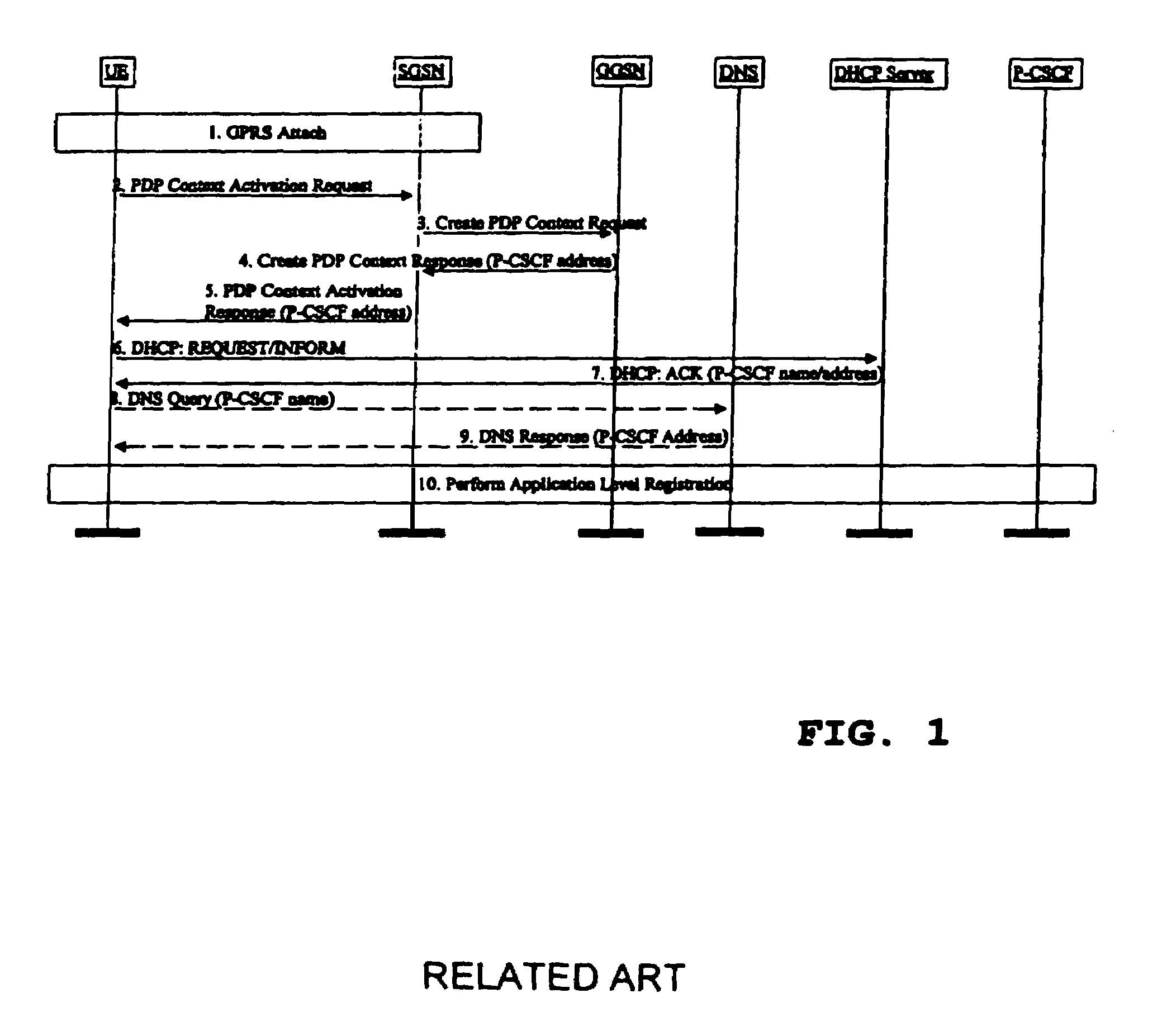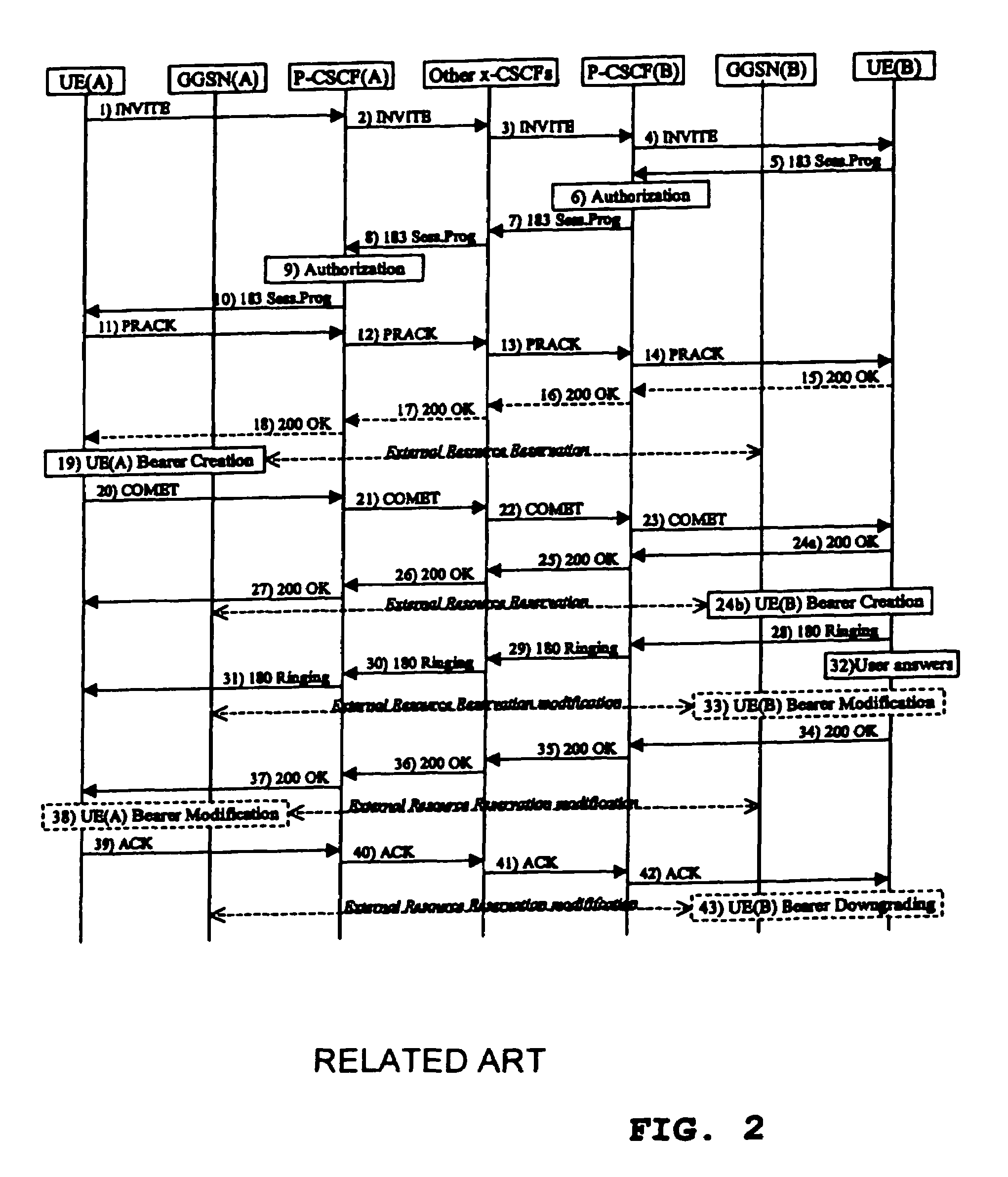Method of speeding up the registration procedure in a cellular network
a technology of a cellular network and a registration procedure, applied in the field can solve the problem that the mobile terminal cannot send information, and achieve the effect of speeding up the registration procedure in a cellular network
- Summary
- Abstract
- Description
- Claims
- Application Information
AI Technical Summary
Benefits of technology
Problems solved by technology
Method used
Image
Examples
Embodiment Construction
[0027]At first, reference is made to the comparative example depicted in FIGS. 1 and 2, illustrating a current view of VoIP signaling based on existing knowledge.
[0028]In these figures, DNS denotes a directory name service, and DHCP denotes a dynamic host configuration protocol, while UE denotes a user equipment such as a mobile terminal. Other denotations are explained elsewhere in the present description.
[0029]A rough count reveals a minimum of 25 messages over the radio distance including Radio Resource Control (RRC) messages which are not depicted here for a mobile terminal UE to fixed phone call, when starting with a turned off mobile terminal UE; and at least 40 messages over the radio distance for a mobile terminal UE(A) to mobile terminal UE(B) call, if the called mobile terminal UE(B) is not Radio Resource Control (RRC) connected.
[0030]From this realization, it becomes clear why there is a need to optimize the delay.
[0031]It is remarked that according to the present inventi...
PUM
 Login to View More
Login to View More Abstract
Description
Claims
Application Information
 Login to View More
Login to View More - R&D
- Intellectual Property
- Life Sciences
- Materials
- Tech Scout
- Unparalleled Data Quality
- Higher Quality Content
- 60% Fewer Hallucinations
Browse by: Latest US Patents, China's latest patents, Technical Efficacy Thesaurus, Application Domain, Technology Topic, Popular Technical Reports.
© 2025 PatSnap. All rights reserved.Legal|Privacy policy|Modern Slavery Act Transparency Statement|Sitemap|About US| Contact US: help@patsnap.com



